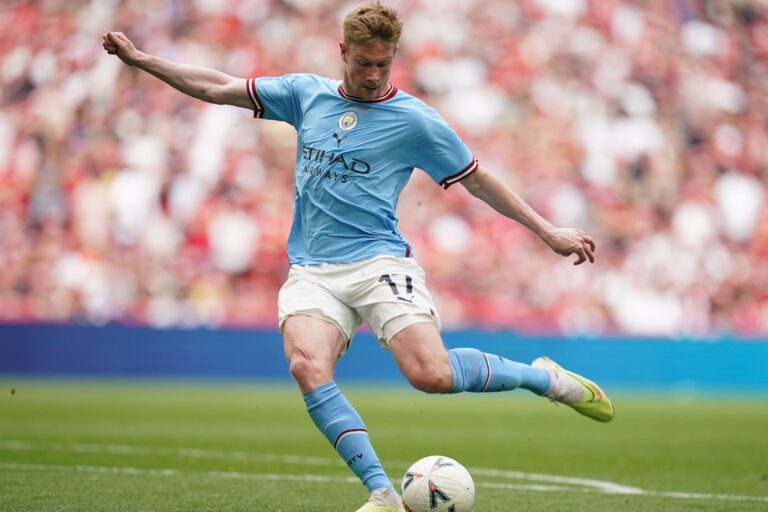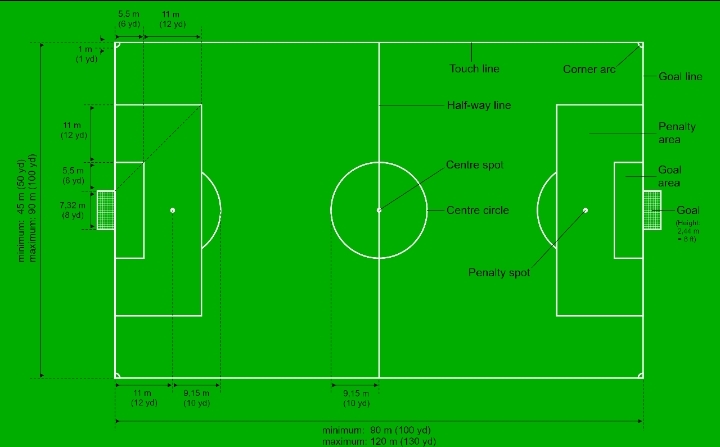Soccer, also known as football, is arguably one of the most beloved sports today, with an estimated 4 billion fans worldwide. The beautiful game traces its origins to ancient times, with some form of a ball game being played for thousands of years across civilizations. However, soccer as we know and love it today emerged in the 19th century and was formally established in England. From humble beginnings, soccer has grown into a global sensation, now played in over 200 countries by 250 million players.
But beyond just its widespread appeal as a participatory and spectator sport, soccer has also undergone a remarkable evolution when it comes to the equipment and technologies involved. The gear, tools, and innovations that surround soccer have advanced tremendously, helping transform how the game is played, practiced, watched, and experienced.
Humble Beginnings: Soccer’s Earliest Equipment
In the early days of soccer, the game was played in a very informal way compared to the complex, technology-driven sport we know today. The equipment involved was extremely basic:
- Attire: Players would participate in whatever clothing they wore in everyday life. This usually meant very simple shirts, pants, or knee-length shorts made from fabrics like cotton or wool. Protective equipment was essentially non-existent.
- Footwear: Regular street shoes or work boots were the norm. Players crossed fields in the same leather footwear they used for everyday activities. Soccer-specific boots or cleats did not exist.
- Balls: Early soccer balls were made by stitching together panels of leather or similar materials and stuffing them with inflated animal bladders, scraps of fabric, or anything else that created a bouncy, spherical shape. They varied greatly in size and weight.
- Goals: The earliest goals were makeshift and not standardized. Anything from stones, bags, or clothes could mark goal boundaries. Portable wooden frames eventually became more common.
In the early days, very minimal rules existed and virtually no safety regulations or league oversight shaped the game. Soccer was essentially an informal leisure activity rather than an organized sport. However technological, material, and manufacturing advances laid the foundations for rapid transformations in equipment and facilities.
The Development of Soccer Balls
The soccer ball itself has undergone some of the biggest equipment innovations throughout the history of the sport. While early balls were very rudimentary, advancements in materials and technology allowed for better shaping, consistency, and performance.
- In the 1800s, leather balls stitched by hand or machine became common. They maintained a spherical shape but absorbed water and were heavy.
- By the 1900s, balls started to be standardized in size, weight, and shape. Leather panels were carefully hand-stitched and bladder systems improved air retention.
- In the 1930s, advances in manufacturing allowed for lighter and more durable soccer balls. Materials like rubber and nylon entered the picture.
- By the 1940s, the iconic 32-panel design was developed. Balls also started being made of waterproof, vulcanized rubber.
- The 1960s saw balls adopt synthetic materials like polyurethane, which offered lightness, softness, and durability.
- Iconic balls were developed like the Adidas Telstar introduced in 1968 with its iconic black and white panels.
- Modern match balls are technical masterpieces engineered for ideal flight, touch, and aerodynamics thanks to wind tunnel testing.
From irregularly inflated leather pouches to the meticulously designed balls used in World Cups, the soccer ball has come a remarkably long way in advancing gameplay and bringing science into the sport.
From Humble Boots to Advanced Soccer Cleats
The footwear used in soccer has rapidly transformed as innovations in materials, studs, and traction technologies have allowed players to run faster and make quicker cuts.
- Early soccer boots were very basic, made of heavy leather materials similar to work boots at the time. They lacked studs, spikes, or any elements to enhance grip.
- In the 1920s, replaceable studded boots were introduced, allowing studs to be changed based on field conditions. This was an early revolution.
- After WWII, rising brands like Adidas and Puma advanced boot designs, making them lighter by using synthetic leather and improving stud shapes.
- By the 1960s, soccer boots shed the heavy leather for nylon and other synthetic uppers. New sole plates and advanced stud configurations enabled better acceleration and pivoting.
- Starting in the 1990s, boots shifted aggressively to synthetics, reducing weight and improving fit through anatomical designs. Traction and grip improved through bladed and conical stud variations.
- Iconic cleats emerged associated with legends of the game – the Puma King, Adidas Predator, and Nike Mercurial, which introduced a sock-like fit.
- Modern cleats use cutting-edge materials like Pebax and fiberglass for stiff, responsive soles. Traction tech includes bladed studs, conical studs, and turf-specific outsoles. They are meticulously engineered for quickness, control, and power.
The soccer cleat is now a technical innovation in itself, engineered to enable next-level speed and control. Players can choose exactly the right boot for their position, skills, and the playing surface.
Jersey Materials and Design
The soccer jersey, or kit, has transformed from a basic shirt into an iconic representation of teams, brands, and sporting heritage.
- Early jerseys were made of heavy cotton or wool shirts. Some had collars and button fronts resembling everyday attire of the period.
- By the 1950s, jerseys adopted synthetic fabrics like nylon and polyester which were lighter, cooler, and helped wick sweat.
- Jersey designs evolved from simple block colors to represent teams, to iconic styles with stripes, hoops, and crests.
- In the ’60s and ’70s, jersey designers like Admiral and Umbro competed through bold designs, colors, and trim. Sponsor logos appeared.
- Advances in fabric technology drove moisture-wicking, breathable jerseys helping athletes stay cool and dry.
- The 1990s saw major branding via sponsors like Nike and Adidas. Replica versions gave fans access to team kits.
- Modern jerseys utilize high-tech materials and design techniques like body mapping and compressed fit for optimal performance. Major manufacturers compete to innovate and outfit top teams.
- Limited edition jerseys are released each World Cup featuring new technologies, designs celebrating heritage, and environmentally-friendly materials like recycled plastics.
The jersey remains central to team identity and fan culture. And brands continue to push design and tech to new levels.
Protective Gear Advances
Along with equipment to improve performance, innovations in protective soccer gear have also evolved to keep players safer on the pitch.
- Early protective gear was limited – some players wore knee pads or shin guards made of leather, rudimentary padding, or stuffed cotton.
- In the mid-20th century, basic foam padding and soft leather shin guards emerged offering more protection from kicks and tackles.
- By the 1960s, hard plastic shin guards became popular for more robust protection. Carbon fiber shin guards later entered use in the 1990s.
- Advanced shin guards today utilize materials like fiberglass and Kevlar to diffuse impacts. Some contain gel padding or polyurethane shields for flexibility and lightweight.
- Goalie gloves evolved from basic leather padding to advanced designs with finger protection, grip elements, and punching support features.
- Headgear, protective shirts, padded shorts, masks, and gloves help protect athletes recovering from injuries.
- Soccer socks also integrated more cushioning and grip elements to prevent abrasion and keep shin guards in place.
While initially sparse, protective soccer gear continues to evolve. Along with optimizing performance, brands also innovate to keep players safer and extend careers.
Training Gear and Equipment
As soccer evolved into a serious competitive sport, specialized equipment for skills training, conditioning and biomechanics analysis has emerged.
- Early training was limited to running drills with cones, hurdles, basic goalkeeper equipment, and gym tools for strength training.
- Tackling dummies, shooting nets, and padded agility poles were introduced to practice techniques.
- Tracking technology like GPS and wearable heart monitors allow detailed quantification and analysis of physical exertion and performance.
- Video analysis software gives coaches insight into things like shot techniques and positioning.
- Resistance devices like parachutes, weighted sleds, and plyometrics tools help build explosive power.
- Custom training balls, shooting targets, ball machines, and passing nets hone technical skills.
- Footwork grids, obstacle courses, and other tools focus on developing quick feet and change of direction.
- Equipment like altitude training masks try to simulate match conditions and build endurance.
From basic cones and goals to technologies like semi-automated ball feeds, soccer training equipment continuously evolves to help raise performance.
Game Equipment and Facilities
Beyond just gear for players, equipment used in competitive matches and the soccer facilities themselves have evolved tremendously.
- Early soccer pitches were simple grass fields with lines marked using lime or chalk. The goals were portable wooden structures.
- The 1960s saw the emergence of artificial turf pitches offering increased durability and easier maintenance compared to natural grass. However, the synthetic surfaces were much harder.
- Modern pitches use hybrid grass combining natural and artificial fibers for optimal playability and safety. Underground heating and lighting allow use in all conditions.
- Specialty turf has been developed specifically for soccer featuring technologies like infill particle systems to emulate real grass.
- High-tech stadiums now feature retractable roofs, drainage and irrigation systems, undersoil heating, and high-lumen lighting for ideal visibility.
- The soccer ball itself has advanced tremendously. Match balls are meticulously designed and tested for responsiveness, water resistance, and shape retention.
- Equipment like goal netting, corner flags, field paint, and referee gear has also improved – using tech like foam posts to prevent injuries.
- Soccer goals have evolved from wooden frames to aluminum and steel structures with netting suspension systems and ground anchors for safety.
Facilities and equipment for both competition and training have greatly improved to provide the best playing experience. Pitch quality and match balls themselves help raise the level of the sport.
Technology and Video-Assisted Refereeing
One of the biggest technological advances in soccer has been in assisting referees in making accurate decisions during matches:
- For most of soccer’s history, officials relied solely on their vision and judgment to referee matches and enforce rules. This made mistaken calls inevitable.
- In 2012, FIFA implemented goal-line technology using cameras and sensors to definitively determine if a ball fully crossed the goal line for a score. This eliminated the debate around goal/no-goal calls.
- By 2018, the Video Assistant Referee (VAR) system was rolled out at the World Cup. Now referees can review key incidents on video and reverse incorrect calls. The system has since been implemented across many pro leagues.
- Ongoing trials are occurring around semi-automated offside detection using limb-tracking cameras. This would assist officials in making precise and quick offside decisions.
- Electronic performance tracking systems are also being tested for things like ball/player speed, distance covered, and real-time data analytics.
Technology integration has helped improve refereeing accuracy and make the game fairer. Video review in particular has been a major advance despite some criticisms. Further innovations are likely to enter the sport and evolve how matches are controlled.
Soccer has come a tremendously long way from humble beginnings on village greens to today’s high-tech atmosphere. Equipment and technology will continue advancing, bringing new capabilities while preserving the sport’s essence and traditions. Understanding these innovations provides deeper insight into soccer’s origins and future.
The Evolution Continues
The transformation of soccer equipment and technology has been truly remarkable. From primitive balls made of rags to today’s meticulously engineered cleats, jerseys, and balls featuring cutting-edge materials and design, the gear of the game has come incredibly far.
The sport itself has progressed from informal roots to a high-tech powerhouse, now played passionately by millions worldwide. While staying true to its origins built on athleticism and skill, soccer continuously evolves as new technologies enter the realm.
Innovations will surely continue as brands compete to heighten performance and provide the best experience for players and fans. Lighter synthetic fabrics, digitally engineered kicks, smart wearables, and advanced data analytics seem likely to shape soccer’s future. Officiating tech and medical science supporting player health may also see breakthroughs.
But at its core, soccer remains a game beloved for its simplicity – a ball, a field, and the match’s impartial judge: time. The pure joy that ignites when a crisp pass meets a teammate’s foot, or the ball hits the back of the net will forever persist, regardless of the materials and technology involved.
Soccer’s incredible growth from a pastime to a global phenomenon has been facilitated by equipment innovations enabling better, fairer, and more thrilling play. But time with precision, the referee’s final whistle will continue blowing long into the future, cutting eruptions of cheers and tears from devotees around the world.
Read More: Set Pieces: Corner Kicks and Free-Kick Strategies to Score More Goals
Author







